“Family reconstructions" refers to identifying, for a population, the basic biographic facts (birth, death and marriage(s)) of its members and linking them to their parents, spouse(s) and children.
They are composed of the following elements:
-
Parish records (source)
-
Index of the parish records through certificates
-
Individual files
-
Family and couple files
To better understand the importance of family reconstructions, we will explore the process leading to their creation by using the example of François Plouf, who lived in St-François-Xavier-de-Verchères in the 18th century.
The first step of the process is to index the parish records. The indexing consists of creating certificates that contain the information extracted from the parish record, such as the names, surnames, dates, locations and more. These certificates are at the base of the family reconstructions.
Example:
François Plouf’s baptism certificate sourced from the original parish record
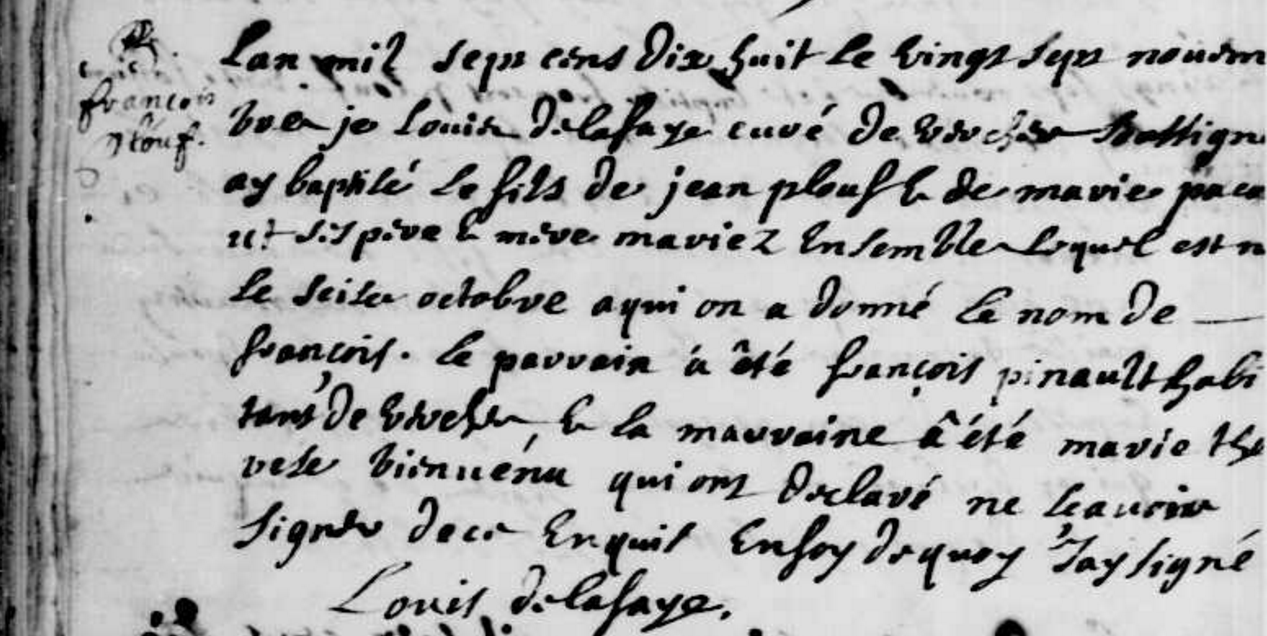
François Plouf’s baptism record, Contrecoeur register
(Source: Fonds Drouin / www.genealogiequebec.com)
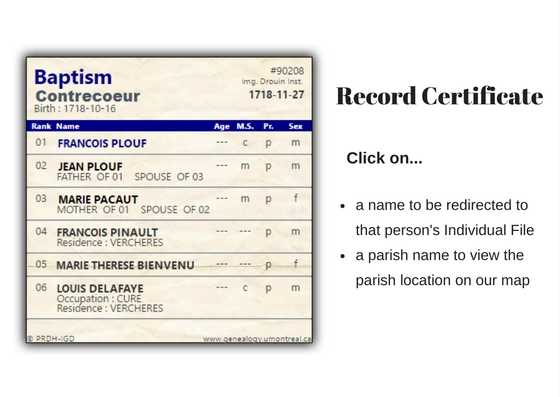
François Plouf’s baptism certificate is created based on the parish record
(Source: PRDH / www.prdh-igd.com)
Once the records have been indexed under certificates, it is time to create the “individual files”. Any person mentioned in a baptism, marriage or burial record has their own individual file created. This file is used to centralize all the records and all the information available on that person.
Example:
François Plouf’s individual file,
centralizing the information regarding his birth, death and marriage(s) (when applicable).
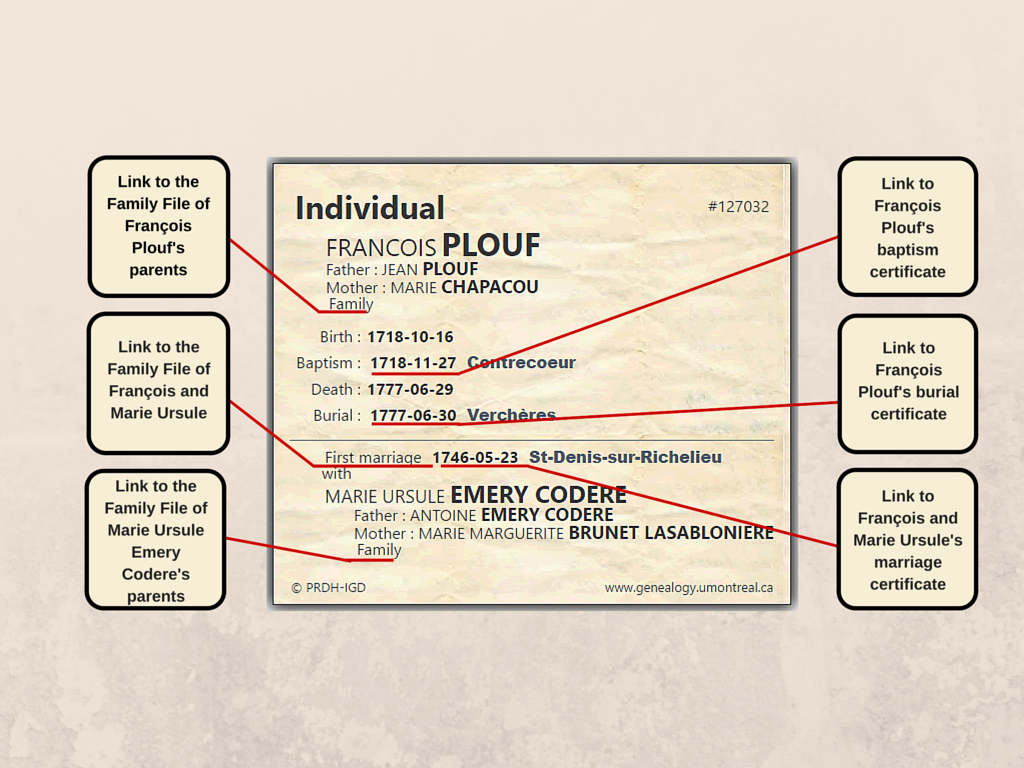
François Plouf’s individual file
(Source: PRDH / www.prdh-igd.com)
In our files and certificates, every mention of an individual’s name is also a link to that individual’s file.
The next step in the family reconstruction process is the creation of couple files. A “couple” relationship exists between married individuals. The marriage record is at the base of this relationship. If the marriage record isn’t available, a “couple” can be determined through the birth of legitimate children.
The couple file contains information on the couple and their married children. In other words, only children with their own couple file will be visible in their parent’s file.
Example:
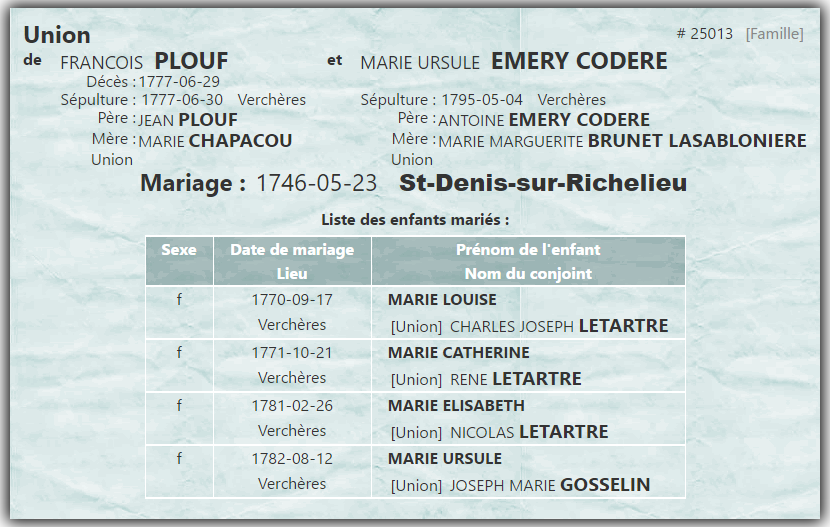
François Plouf and Marie Ursule Emery Codere’s couple file
(Source: PRDH / www.prdh-igd.com)
Finally, the family reconstructions are completed with the creation of Family Files, which can be described as the association between Couple Files and Individual Files.
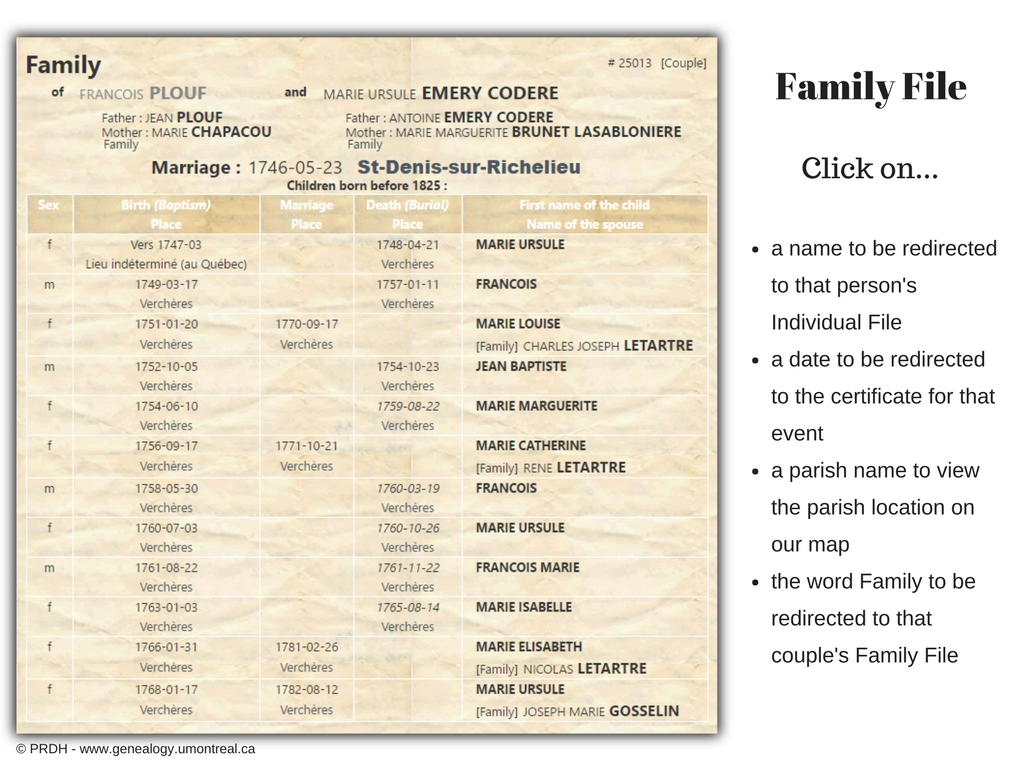
François Plouf and Marie Ursule Emery Codere’s Family File
(Source: PRDH / www.prdh-igd.com )
The Family Files contain the following information/links:
-
The father and mother and their respective parents
-
A link to the couple’s marriage
-
The list of their children
-
A link to the baptism, marriage (when appropriate) and burial of each children
-
A link to the Individual and Family Files (when appropriate) of all the individuals mentioned in the file
-
For Genealogy Quebec (www.genealogiequebec.com) subscribers, a link to the original baptism, mariage or burial record for every vital event referenced in the file, from the Drouin Institute’s 1621-1940 parish register collection.
The PRDH Family Reconstructions cover the entirety of the province of Quebec for the 1621-1861 period.